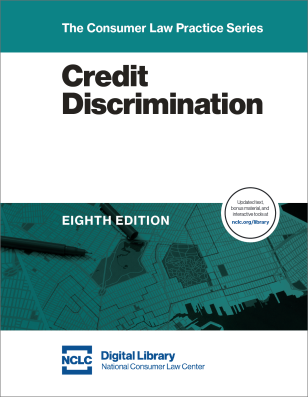On May 1, 2017, the Supreme Court issued a 5-3 decision in Bank of America v. City of Miami, Florida, 2017 WL 1540509 (May 1, 2017), allowing the city to continue its housing discrimination claims against banks accused of predatory lending. The two holdings in the case are fairly limited. First, the Court held that the city is an “aggrieved person” that can sue for damages under the Fair Housing Act (FHA). Second, it held that damages will be awarded only if the discrimination is the proximate cause of city’s damages, and not just that the injuries foreseeably flowed from the discrimination.
Perhaps the real significance of the decision is that it highlights the advantages that the federal discrimination statutes offer to cities, non-profits, and private litigants to challenge unfair or predatory lending practices. Challenges under these federal statutes may be successful in cases where there would be serious obstacles to claims under traditional state or federal consumer statutes.
This article summarizes the Supreme Court holdings in City of Miami, and then explains how discrimination law is an effective tool to challenge predatory or other unfair lending practices.
The Supreme Court’s Holdings in City of Miami
In City of Miami, the city alleged that Bank of America and Wells Fargo violated the FHA by intentionally issuing riskier mortgage loans on less favorable terms to African-Americans and Latinos than they issued to similarly situated white, non-Latino borrowers. The city alleged that these practices caused a higher foreclosure rate that adversely impacted the city in many ways, including reducing property tax revenues and forcing the city to spend more on municipal services.
To bring the action under the FHA, the City of Miami must be an “aggrieved person.” This term is defined as anyone who claims to have been injured by discriminatory housing practices or believes that an injury is about to occur. The Court reiterated that this definition shows a congressional intention to define FHA standing broadly, and ruled that the city was an aggrieved person because of the possible loss of revenue and increased expenses.
The Court also cited approvingly Havens Realty Corp. v. Coleman 455 US 363 (1982), in which the Court found that a non-profit was an aggrieved person under the FHA when it had to spend money to combat housing discrimination. Thus City of Miami not only affirms the ability of cities to use the FHA, but also of non-profit organizations and others even when they themselves are not being directly discriminated against.
The other holding in City of Miami concerns whether the city’s injuries were proximately caused by the housing discrimination so that actual damages can be recovered under the FHA. The Court rejected the Eleventh Circuit holding that proximate cause under the FHA requires only that the injuries be foreseeable. Instead, referring to common law tort standards for proximate cause as an example, the Court held that there must be more of a direct relation between the allegedly wrongful conduct and the injury. But the Court explicitly refused either to define proximate cause for purposes of an FHA action or to rule whether the Miami’s injuries were proximately caused by the discrimination. Instead, it sent both questions back to the Eleventh Circuit.
Discrimination Law Advantages to Challenge Predatory or Unfair Lending
City of Miami highlights the use of discrimination law to challenge predatory lending targeted at African-Americans and Latinos. The City alleged that the banks charged African-Americans and Latinos excessively high interest rates, unjustified fees, and large prepayment penalties, made inflated promises as to refinancing, and unjustifiably refused to refinance. Discrimination law has many advantages over other consumer law causes of action to challenge these and similar lending practices. A number of state unfair and deceptive acts and practices (UDAP) statutes do not even apply to creditors or credit, or only prohibit deceptive, not unfair, practices. For example, in City of Miami, the challenged practices may be unfair, but not deceptive. Other UDAP statutes may only allow homeowners, not the city, to seek challenge the banks’ practices and not the city. The effectiveness of state usury laws, state anti-predatory lending statutes, and other forms of state credit regulation varies dramatically by state and often will not apply to the type of practices challenged in City of Miami. Moreover, state credit statutes may be preempted when applied to national banks. The Truth in Lending Act has a one year statute of limitations and some of its provisions do not apply to conduct by loan brokers, assignees, servicers, and others not the initial creditor. On the other hand, federal discrimination statutes—the Equal Credit Opportunity Act (ECOA), the FHA, and 42 USC §§ 1981, 1982, and 1988—may be well suited to attack predatory lending targeting minorities and other protected classes. Being federal statutes, they are not preempted by federal banking law and apply in all fifty states.
As described in City of Miami, the credit discrimination statutes have liberal standards as to who can bring an action. The statutes also apply to a broad spectrum of defendants, including credit arrangers, assignees, and, devpending on the statute, servicers, realtors, appraisers, sellers, and others involved in the loan process. See NCLC’s Credit Discrimination § 11.3. The ECOA has a five year limitations period, and the FHA has a two year period. Both periods begin from when the discrimination is discovered and may be extended by continuing violations. Id. § 11.9.2. Discrimination laws have strong private remedies. Actual and punitive damages, equitable relief, class actions, and attorney fees are all available. See id. § 11.8. There is also good precedent to obtain sizeable intangible damages in credit discrimination cases. See id. § 11.8.2.3. The federal discrimination statutes also offer federal jurisdiction. Where state court is preferred, most states have similar state discrimination statutes. See Id. Appx. F.
Because of the strong federal policy against discrimination, courts may also be more receptive to discrimination claims than under other consumer statutes. For example, when predatory terms are part of a written agreement, the court may believe that the consumer agreed to the terms and that therefore there is no unfairness. But even a court that takes a caveat emptor approach to claims relating to unconscionability and unfairness may feel differently about conduct that discriminates on the basis of race or membership in another protected class.
Discrimination Law’s Application to Predatory or Unfair Lending
Two particular applications of federal credit discrimination laws have special relevance where creditors target predatory loans at minority communities. One application is highlighted in City of Miami where the plaintiff alleged that the banks intentionally issued riskier mortgages on less favorable terms to African-American and Latino homeowners than they issued to other similarly situated homeowners. That is, a discrimination case can be based not on the denial of credit to minorities where non-minorities are offered credit, but on the fact that minorities are extended credit on terms more adverse than those offered to similarly situated non-minorities. Id. § 8.3.
The other theory is reverse redlining—intentionally targeting minority neighborhoods or individuals for predatory lending or particularly bad credit terms. Reverse redlining does not require a showing that similarly situated non-minorities were offered better loans, only that that the lender intentionally targeted its risky and high-priced loans to minority communities or individuals. Reverse redlining is discussed at Id. § 8.5.


